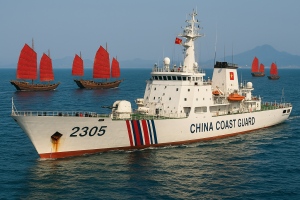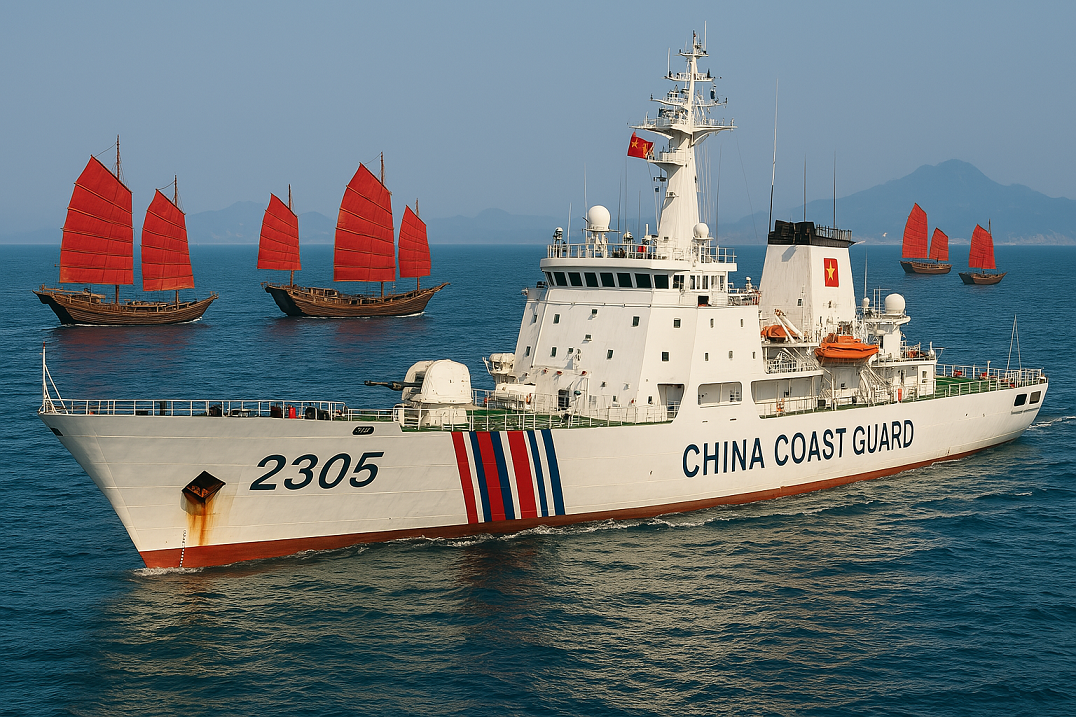Why China Is the Anchor of Global Maritime Activity
From freight logistics and green shipbuilding to naval operations and financial leasing, China’s maritime industry dominates headlines and search queries alike. As the world’s top exporter, the country is deeply integrated into every aspect of global trade, shaping how cargo moves, ships are built, and maritime security is managed.
In this article, we unpack the most searched maritime topics related to China—providing valuable insights for beginners, students, shipping professionals, policy analysts, and logistics managers alike.

1. Sea Freight Costs and Logistics
Sea freight is the backbone of global trade, with China serving as its central hub. Businesses rely on FCL (Full Container Load) for bulk shipments and LCL (Less-than-Container Load) for smaller cargo, balancing cost and efficiency. Popular search queries like “sea freight costs from China 2025” and “transit time from Shanghai to LA” reflect growing demand for shipping insights. Major Chinese ports—Shanghai (world’s busiest), Shenzhen (container hub), and Ningbo-Zhoushan (deepwater access)—dictate transit times, such as 15-18 days from Ningbo to LA or 30 days to Rotterdam. Understanding these logistics helps optimize supply chains and reduce delays. Sea freight is the lifeline of global commerce—and China is its central hub. Understanding how freight moves from Chinese ports is essential for global trade stakeholders.
Key Freight Models: FCL and LCL
There are two main options when shipping cargo by sea:
- FCL (Full Container Load): Best for bulk shipments—one customer per container.
- LCL (Less-than-Container Load): Ideal for smaller shipments—shared space with others.
Search trends show rising interest in:
- “Sea freight costs from China 2025”
- “Transit time from Shanghai to LA”
- “FCL vs LCL shipping from Shenzhen”
Top Freight Routes & Major Ports
China’s largest shipping gateways include:
- Shanghai: World’s busiest port
- Shenzhen: Container logistics hub
- Ningbo-Zhoushan: Deepwater port with intermodal links
Transit times vary based on distance and congestion:
- Shanghai to Rotterdam: ~30 days
- Ningbo to LA: ~15–18 days
🌍 Learn how ships are managed in transit in How a Ship Is Maneuvered To or From a Port
2. Import and Export Trends: What Does China Trade?
China dominates global trade with exports like electronics (smartphones, semiconductors), machinery, and textiles, while importing iron ore, crude oil, and soybeans. Searches such as “China’s top exports to the U.S. 2025” and “machinery export customs clearance” highlight market interest in trade flows. These trends influence freight demand, port activity, and shipping rates, making them crucial for logistics planning. Understanding China’s trade portfolio provides insight into freight demand, port activity, and global supply chains.
Major Chinese Exports
- Electronics (smartphones, semiconductors)
- Machinery (industrial equipment, vehicles)
- Textiles and steel
Top Imports into China
- Iron ore (mainly from Australia and Brazil)
- Crude oil
- Soybeans
- High-end machinery
3. Trade Wars and Their Impact on Freight
Geopolitical tensions, like the U.S.-China trade war, have reshaped global freight—increasing tariffs, rerouting shipments, and causing port congestion. Search trends (“tariffs on China exports 2025,” “supply chain costs from trade wars”) reveal ongoing concerns. Many companies now diversify sourcing or adopt nearshoring to mitigate risks, impacting shipping routes and logistics strategies. Geopolitical shifts have a measurable impact on the cost, speed, and reliability of freight routes.
The U.S.-China Trade War
Tariffs introduced between 2018–2023 affected:
- Sea freight volumes
- Port congestion levels
- Rerouting of container traffic
Companies have diversified sourcing and explored nearshoring or friend-shoring as a result.
🔍 Explore related supply chain resilience concepts in our article: Port Operations and Management
4. China’s Leading Maritime Ports
China’s ports are highly digitalized and strategically vital, driving global maritime trade. Shanghai, Shenzhen, and Ningbo-Zhoushan lead in volume and efficiency, handling massive cargo flows while integrating automation for faster turnaround. Their dominance influences shipping costs, transit times, and global supply chain resilience, making them key to international logistics.
China’s ports are not just large—they are digitalized, efficient, and strategically located.
Top Ports by Throughput (TEUs)
| Port | 2024 Approx. Throughput (TEUs) |
|---|---|
| Shanghai | 47 million |
| Ningbo-Zhoushan | 35 million |
| Shenzhen | 28 million |
| Guangzhou | 24 million |
| Hong Kong | 16 million |
Port Infrastructure & Connectivity
Chinese ports are well-connected to inland regions via:
-
Railway corridors
-
Inland container depots (ICDs)
-
High-speed logistics highways
5. China’s Global Leadership in Shipbuilding
China dominates global shipbuilding with a record $123 billion orderbook in 2024, constructing high-demand vessels like LNG carriers, mega-container ships (24,000+ TEUs), and bulk carriers. Leading shipyards—Yangzijiang, CSSC, and COSCO Shipping Heavy Industry—are pioneering eco-friendly innovations, including LNG dual-fuel engines, methanol-ready ships, and hybrid propulsion to meet IMO decarbonization targets. Searches for “China LNG shipbuilding 2024” and “largest container ship manufacturers” reflect industry interest in China’s cost-efficient, high-tech maritime solutions. China holds the world’s largest shipbuilding orderbook, worth over $123 billion in 2024 alone.
High-Demand Vessel Types
- LNG carriers (cleaner fuel transport)
- Container ships (from 2,000 to 24,000+ TEUs)
- Bulk carriers and tankers
Eco-Friendly Innovation
To meet IMO decarbonization goals, Chinese yards are pioneering:
- LNG dual-fuel engines
- Methanol-ready ships
- Hybrid electric propulsion
Popular shipyards include:
- Yangzijiang Shipbuilding Group
- CSSC and CSIC
- COSCO Shipping Heavy Industry
6. Military-Commercial Shipbuilding Integration
China’s dual-use shipyards blur the lines between civilian and military production, enabling civilian yards to build auxiliary naval vessels and share tech in propulsion and logistics. This Military-Civil Fusion strategy fuels advancements in both sectors, with projects like the Type 075 amphibious ship built in commercial facilities. Rising searches for “China-Russia naval partnerships” and “civil-military shipyard integration” highlight global scrutiny of this approach. Understanding this integration is key to assessing China’s maritime expansion. China’s dual-use shipyards serve both commercial and military purposes, raising global interest and scrutiny.
Military-Civil Fusion
This strategy allows:
- Civilian shipyards to produce auxiliary naval vessels
- Shared innovation in navigation, propulsion, and logistics
Trending topics:
- “China-Russia naval tech partnerships”
- “Shipyard civil-military integration”
- “China’s Type 075 amphibious ship from commercial yard”
🛠️ Dive into Essential Ship Engine Room Tools to understand the systems on both commercial and military ships.
7. Maritime Security and International Naval Drills
China actively participates in multinational exercises, reflecting its expanding blue-water naval capabilities.
Key Exercises
- Security Belt 2025 with Russia and Iran
- Focus: VBSS (Visit, Board, Search, and Seizure) ops, live-fire drills, and joint patrols
Popular queries include:
- “China-Russia-Iran joint naval drills 2025”
- “China naval strategy in South China Sea”
- “Impacts of security drills on trade routes”
8. Maritime Finance and Ship Leasing
Beyond logistics and shipbuilding, China is also a global player in maritime finance.
Ship Leasing Expansion
Chinese firms are investing billions in:
- LNG and LPG carrier fleets
- Oil tankers and car carriers
- Long-term leasing deals with foreign shipping companies
Hong Kong is transforming into a global hub for:
- Ship leasing
- Marine insurance
- Maritime law and arbitration
Recent trending topics:
- “China LNG fleet expansion $150 million”
- “Hong Kong ship leasing tax policy”
- “Best shipping finance companies in Asia”
Summary of Key Search Topics
| Category | Popular Topics | Example Queries |
|---|---|---|
| Shipping Logistics | Freight costs, transit times | “Sea freight costs from China 2025” |
| Major Ports | Throughput stats, infrastructure | “Port of Shanghai container volume 2025” |
| Shipbuilding Leadership | LNG, hybrid ships | “China LNG carrier orders 2025” |
| Maritime Security | Naval exercises | “China-Russia-Iran joint naval drills 2025” |
| Maritime Finance | Ship leasing, finance hubs | “China LNG fleet expansion $150 million” |
FAQs: People Also Ask
Q: What is FCL and LCL in shipping from China?
FCL (Full Container Load) is for large shipments occupying one container. LCL (Less-than-Container Load) is used for sharing container space.
Q: What are the busiest ports in China?
Shanghai, Ningbo-Zhoushan, Shenzhen, and Guangzhou are among the world’s top ports.
Q: How does China support green shipbuilding?
By producing LNG carriers, hybrid-propulsion ships, and incorporating IMO-compliant emission technologies.
Q: Why is ship leasing growing in China?
Favorable regulations and investment from financial institutions make China a leading player in maritime asset leasing.
Conclusion: China’s Maritime Rise Is Reshaping the Global Ocean Economy 🌐⚓
China’s maritime sector is no longer just about moving goods—it’s a multidimensional force spanning trade, innovation, defense, and finance. For professionals, researchers, companies, and global citizens, staying informed about China’s maritime developments is key to understanding the future of world trade.
📚 Ready to dive deeper? Visit MaritimEducation.com for practical articles, case studies, and learning resources on the global maritime industry.

